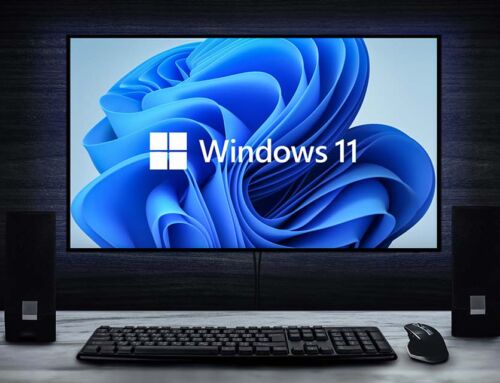- IT companies used to make their money by charging customers for all the hours they worked to solve a problem. The bigger the problem, the more man-hours could be charged. So far, so good for the IT service provider – but so far, so bad for the customer. Because, according to this model, the problem often costs him more time and money than necessary. A classic win-lose situation that brought the customer one thing above all: dissatisfaction.In addition to this classic Broke & Fix model, IT companies have been offering a more customer-friendly alternative for some time: Managed Services. We explain why this was long overdue, why not only customers benefit from it – and above all how these managed service models work.
TIME IS MONEY
Traditionally, many IT companies have made their money by charging for hours worked. This means: the customer had a problem or a requirement, an IT company took care of it and charged for its services and expenses on a time and material basis. Regardless of how efficiently the IT company was able to resolve the request, the customer simply had to pay for the number of hours worked. Thus, to say the least, the IT partner was not too interested in solving the problems as quickly and efficiently as possible, because high efficiency means fewer hours, ergo less profit. This view led to several problems:
- The customer only wanted to contact the IT provider in an absolute emergency to prevent variable and unplanned costs.
- As a result, problems were not solved immediately (and if they were, then not sustainably), which could lead to even greater expenses or even to major security risks.
- There were regular discussions between the client and contractor whether all the hours charged were justified or not. However, customers often find it very difficult to assess this due to a lack of specialist knowledge.
- The longer it took an IT vendor to solve a problem, the more money it made.
- At the same time, he was dependent on just such jobs where he could log hours. If these did not exist, he earned nothing or little. Revenue and resource utilization were not consistent and very difficult to calculate.
- In the same way, IT costs were not calculable for the customer.
- IT was often seen by many customers only as a cost factor, and was accordingly not infrequently subordinate to the head of finance.
- Each installation/configuration was unique, involved a lot of customization (rather than standardization), and was therefore more costly to maintain. A standardized scope of services was missing.
- The IT provider was “only” a supplier and as such not jointly responsible for the quality and efficiency of its products and/or services.
CONTEMPORARY AND ADVANTAGEOUS FOR BOTH SIDES
- For a long time, collaboration between companies and their IT partners has looked like this or something similar. This was senseless from many points of view. Some companies have recognized this and switched to a more contemporary, much more sensible model – so-called managed services.In the managed service model, the customer receives a predefined IT service of a defined quality at a fixed monthly price per company, per workstation or per user. The price per month is calculated from the selected package and can of course differ depending on the provider, but basically includes approximately the following components:
- Outsourcing of IT services and/or cybersecurity services
- Flexible rental of hardware and software (e.g. entire workstations with peripherals)
- Data backup with long-term retention
- Guaranteed availability (Service Level Agreement) and 24/7 service desk
- Consulting/further development and support for digital transformation
WIN-WIN SITUATION THANKS TO MANAGED SERVICES
Since the managed service provider offers all these services at a fixed package price per month, he has, in contrast to the classic provider, a very great interest in delivering the highest possible quality and that few problems arise for the customers. The better the provider succeeds in doing this, the more it ultimately earns from the service. If, on the other hand, they had to constantly solve problems on site at the customer, which are time-consuming and difficult to automate, the fixed-price service would not pay off for the provider in the medium to long term. That’s why it’s important for such a provider to offer a very high-quality service right from the start, which is of course also built up in the background, i.e. where the customer doesn’t even notice it, as efficiently and with as many automations as possible. Because if there are no problems, it’s a win-win situation: the customer is happy with the scope of services and has calculable costs. At the same time, the provider’s service is profitable – with satisfied customers.
In addition, managed services generally incur high fixed costs for providers and can only be operated profitably once a certain number of customers has been reached. For the customer, this often means more attractive prices; for the supplier, on the other hand, it means increased risk, but also enhanced capabilities in product management.
DINOTRONIC AS A MANAGED SERVICE PROVIDER
When developing our services and generally working with our customers, it is important for us that we want to make IT an enabler or a competitive advantage. To do this, it is absolutely necessary to know where action is needed. Therefore, in addition to our consulting services, we also offer you a health check so that we can start in the right places and optimize. However, this can only be achieved if the company or its management has understood that IT is no longer just a cost factor, but an opportunity (= differentiator) to achieve even more.
Have you already realized that? Then we look forward to hearing from you. Read more about our managed services here. Feel free to contact us so we can work together to create a managed service model tailored to your business. Because the Managed Service Model is not just a tool – it is rather the basis of a partnership in which both you as a customer and we as an IT provider can achieve maximum efficiency, productivity and security.




